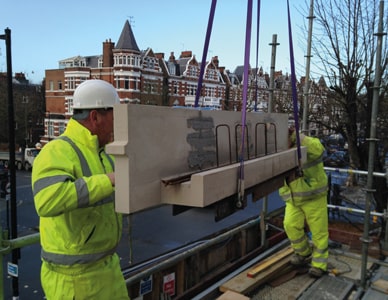Cast stone must be cured correctly to ensure its long-term structural integrity, durability and good appearance. Furthermore, the high strength achieved by correct curing of cast stone provides resistance to damage during transportation, handling and installation.
A common misconception is that curing allows the cement-based product to dry, but sufficient moisture is essential for completion of the chemical reaction that gives the product its strength.
BS 1217, the British Standard for cast stone, specifies a minimum curing time of 14 days before cast stone should be transported or installed – and an extended period may be required for structural units. However, this time can be reduced if an accelerated curing process is employed.
The 14-day period from casting to transportation includes an initial curing period of 12-14 hours away from direct sunlight and winds that can cause a loss of water by evaporation. After the initial 12-14 hours, the product can be moved into protected storage, where it should remain until 14 days have elapsed.
Procter Cast Stone has invested in a state-of-the-art vapour curing chamber that maintains the optimum temperature and humidity of the environment in which the units are placed for a defined time period after casting. This climatic control speeds the curing process and enables the total time to be reduced considerably from the conventional 14 days.
Procter Cast Stone adheres to both BS 1217 and the more stringent requirements in UKCSA’s Specification for Cast Stone and Cast Stone Curing Guidance Note. Our quality control, manufacturing process and vapour curing chamber result in our cast stone units having compressive strengths at least 40 percent higher than can be achieved by some of our competitors.



